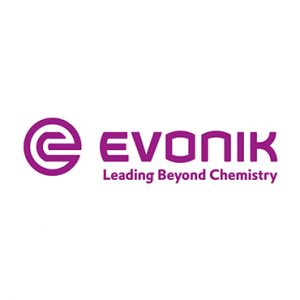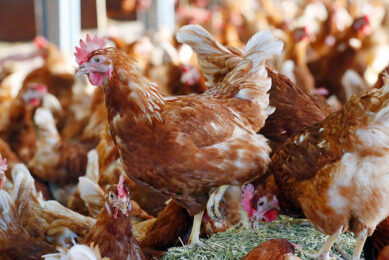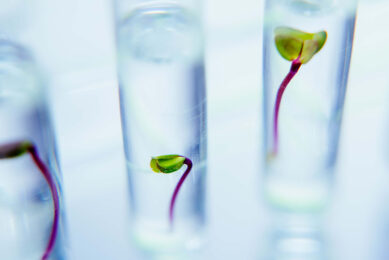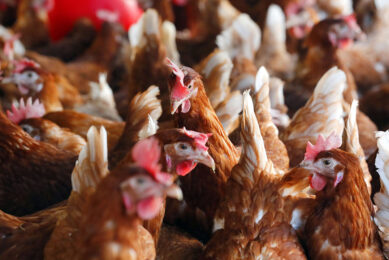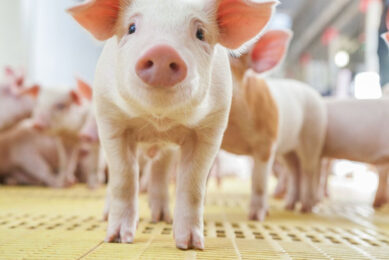Choosing the best methionine source
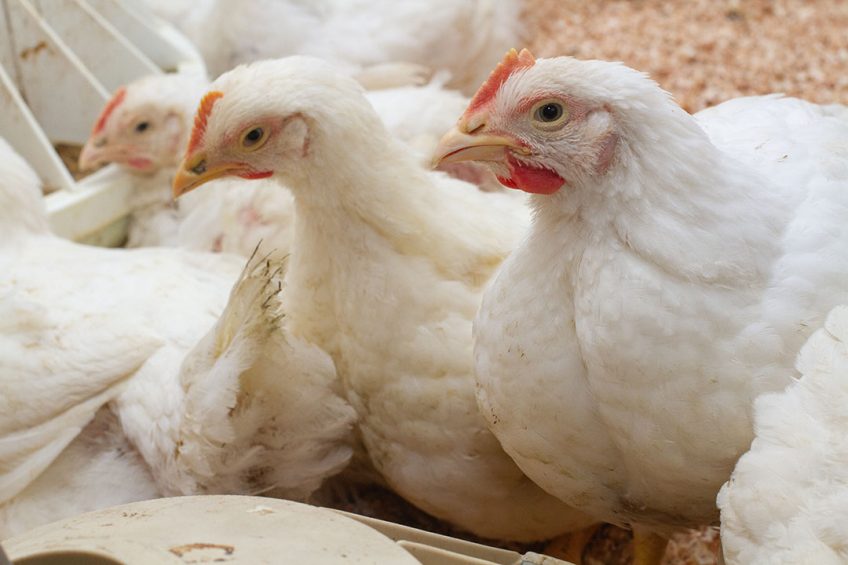
DL-Methionine (DL-Met) and 2-Hydroxy-4-methylbutanoic acid (HMTBa) are frequently used as feed supplement to balance animal diets for methionine and sulphur amino acids. There have been many studies carried out comparing different Met sources to DL-Met resulting in different nutritional values, the end user should therefore carry out thorough research before making their decision on the best source to obtain the best results.
Modern feed formulation tends to reduce the crude protein content in the diet making the relative contribution of supplemental to natural Met larger.
DL-Met, the racemic mixture of D- and L-isomer of Met is commercially available as a feed additive with 99% purity. Methionine Hydroxy Analogue Free Acid (MHA-FA, commonly known as liquid MHA, chemically abbreviated as HMTBa) is also a racemic mixture of its D- and L-isomer and consists of about 65% in monomeric form, 23% in the dimer/oligomeric form and the remaining 12% being water.
Met sources
Over the years, in many cases, the nomenclature of commercial Met sources was used interchangeably wherein MHA-FA is mistermed as liquid Met which created confusion among the end users. This is clearly a misnomer as the products are chemically different. DL-Met is pure Met in dry form and MHA-FA is an acid in liquid form. Despite DL-Met being 100% bioavailable and holding the largest share of Met market globally, the question about the nutritive value being characterised by the relative biological availability (RBA) of liquid MHA-FA or, in other words, the replacement ratio of this product in animal diets, is always a critical factor for cost-effective purchasing and diet cost optimisation.
Numerous studies involving different approaches and various animal species have been carried out to establish the relative efficacy of different Met sources compared to DL-Met. The historical perspective of some of the producers from these RBA studies (Table 1) are quite different from the current claims of the MHA-FA producers.
This position is backed up by many references and independent statements from the past which is summarised in Table 2. Although both products, DL-Met and MHA-FA haven’t changed since the 80s, the opinion of several producers about the nutritional value of the product has definitely changed. This change in opinion is most probably not due to a change in nutritional equivalence of both products which actually remains the same as in the past, but due to commercial preferences having nothing to do with the real interest of the feed compounders or end users.
Bioefficacy of HMTBa
These historical perspective on Met sources is also supported by the recent European Food Safety Authority report (EFSA, 2018) which concludes that HMTBa shows a lower bioefficacy than DL-Met.
The main reason for the lower bioefficacy as cited in EFSA report are:
(i) that the gut microbiota of the small intestine competes with the host more for HMTBa than for DL-Met
(ii) HMTBa and its salts may contain besides the free acid/salt, significant amounts of dimers, trimers, and oligomers, known to have a lower bioefficacy
Further, with reference to the studies in Appendix A, EFSA concludes that from such data, “there is convincing evidence that HMTBa/HMTBa-Ca, on an equimolar/isosulphurous basis, have a significant lower bioefficacy than DL-methionine (75% vs 100%)”. On a commercial product to product comparison that findings translate into an average BE of 65%, taking the water or calcium contents of the different Met analogue sources into account (Figure 1).
Figure 1 – Comparison of RBA of MHA-FA relative to DL-Met on equimolar and product basis (EFSA, 2018).

Absorption of HMTBa
There is historical evidence from the United States Patent No. 3 272 860, wherein the polymerized acids (dimers, trimers and oligomers) have been described as ‘not useful as feed components. In addition, there is substantial evidence from a recent publication that only marginal portion of the di- and oligomer fraction of HMTBa is absorbed.
This is confirmed by the recent EFSA report (2018) that, on an equimolar/isosulphurous basis, the non-monomeric components (dimers, trimers and oligomers) in commercial HMTBa/ HMTBa-Ca products have a significantly lower bioefficacy than the monomeric fraction (53.6% to 69.4% vs 76% to 80.8%).
From scientific studies cited in EFSA report, it can be concluded that bioavailability of non-monomers is on average ~ 20% lower than that of monomers (Figure 2).
Figure 2 – Comparison of RBA of monomeric and non- monomeric components of MHA-FA relative to DL-Met on equimolar basis (EFSA, 2018).

Testing Met sources
The best way to evaluate potential differences in the efficiency of 2 products is just by carrying out animal feed studies. The difficulty with this simple idea is that the results of such studies are strongly dependent on an adequate trial design and accurate interpretation of trial data. Numerous studies involving different approaches and various animal species have shown that the Met sources are clearly different in their bioefficacy. Several publications in the last decades have revealed a bioefficacy of about 65% for MHA-FA/MHA-Ca by testing both Met sources in simultaneous dose-response trials.
A recent broiler trial at Schothorst Feed Research, Netherlands confirms 2018 EFSA scientific opinion on Met sources. The results from this demonstrated that the RBA of MHA-FA is significantly lower than its active content of 88% and close to 65% which agrees with previous publications. Performance parameters (body weight gain, BWG and feed conversion ratio, FCR) of broilers fed increasing levels of DL-Met (MetAMINO), diluted DL-Met (DL-M65) and MHA-FA from this dose response trial is summarised in Figure 3.
Figure 3 – BWG and FCR of broilers fed increasing levels of DL-Met, DL-M65 and MHA-FA.


In the framework of Met usage in the animal production industry, time and again it’s proved that it requires only about 650g of DL-Met to replace every kg of Met analogue (MHA-FA/MHA-Ca) to get the same nutritional effect.
Making the right choice
Overall, it can be stated that most of the studies with Met sources DL-Met and MHA-FA/MHA-Ca showed a clear difference in the nutritional value of MHA-FA/MHA-Ca, whilst DL-Met is always 100%, and therefore it does matter to the animal species. There are multiple reasons for the value difference and end users should take a deep insight when making their choice about the best source for best performance with best results.
References available upon request


